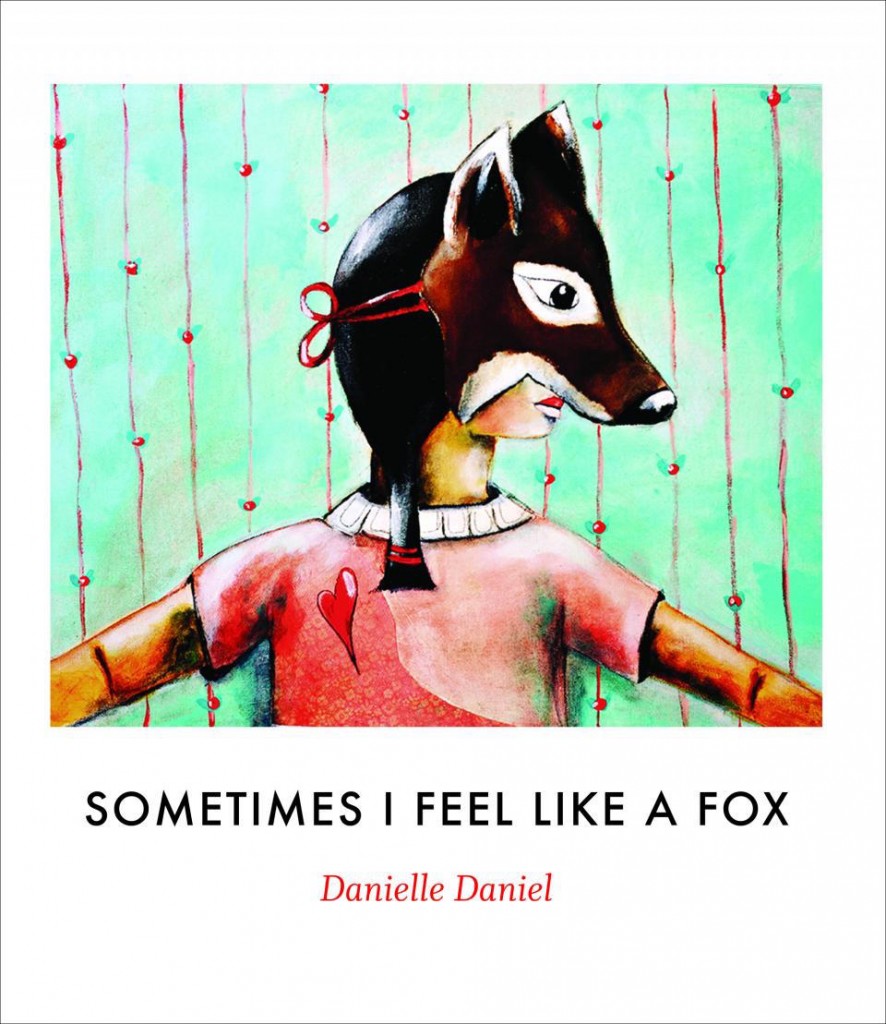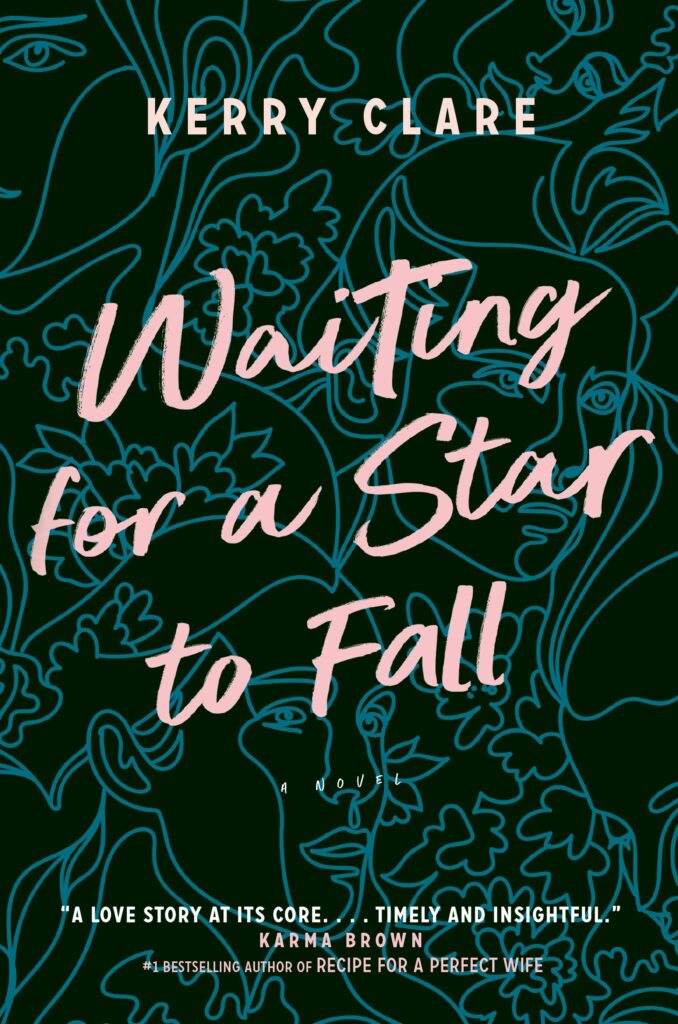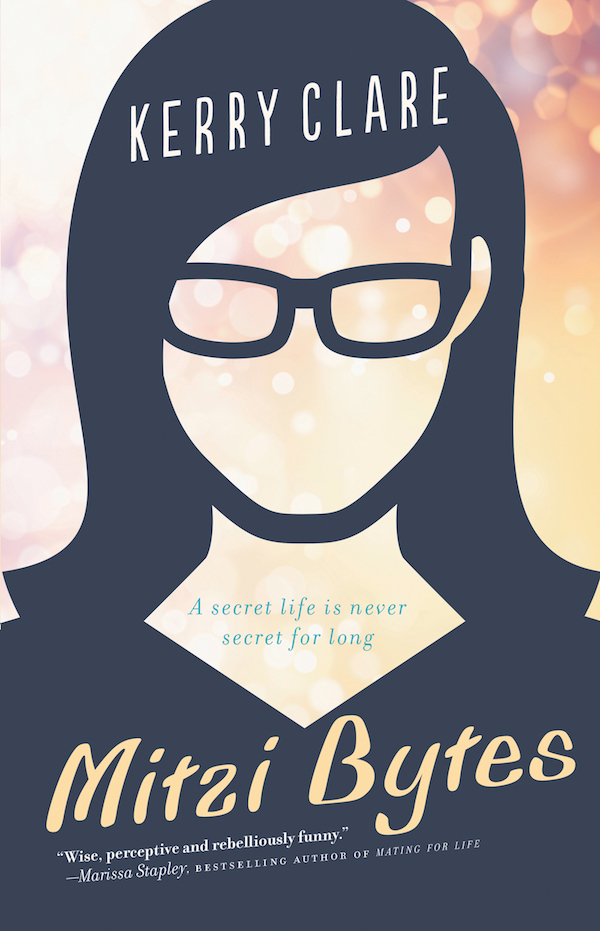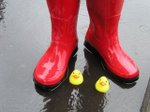September 20, 2015
Fates and Furies by Lauren Groff
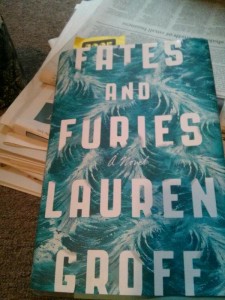 “…consider sacrificing surprise, the lowest form of literary pleasure, for the much richer satisfaction the first half of this novel can deliver when read in light of the second,” writes Laura Miller in her review of Lauren Groff’s new novel, Fates and Furies, in which spoilers are revealed. A line I delighted in when I first came upon it; that a good book can’t be spoiled is something I’ve long insisted on. But like all good rules, there are exceptions, and I got to thinking about them after reading Miller’s review. There are books—one of my favourite books, We Need to Talk About Kevin is one; a more recent example is Karma Brown’s debut, Come Away With Me; also Kate Atkinson’s wonder A God in Ruins—in which the element of surprise is an integral part of the reading experience. In which the reader gets to the twist, puts the book down and asks, “How did she do that?” When we aren’t even aware that a twist is coming. And then the reader goes on to pick the book up again in order to discover the answer to how did she do that, compelled by the crafting that goes into the kind of book that will never be read the same way twice. Whereas other compelling books—Gone Girl, The Girl on the Train—fail to similarly necessitate another reading. The twists are all. These are books—gripping, great and fun, but still—that can be spoiled merely by being read.
“…consider sacrificing surprise, the lowest form of literary pleasure, for the much richer satisfaction the first half of this novel can deliver when read in light of the second,” writes Laura Miller in her review of Lauren Groff’s new novel, Fates and Furies, in which spoilers are revealed. A line I delighted in when I first came upon it; that a good book can’t be spoiled is something I’ve long insisted on. But like all good rules, there are exceptions, and I got to thinking about them after reading Miller’s review. There are books—one of my favourite books, We Need to Talk About Kevin is one; a more recent example is Karma Brown’s debut, Come Away With Me; also Kate Atkinson’s wonder A God in Ruins—in which the element of surprise is an integral part of the reading experience. In which the reader gets to the twist, puts the book down and asks, “How did she do that?” When we aren’t even aware that a twist is coming. And then the reader goes on to pick the book up again in order to discover the answer to how did she do that, compelled by the crafting that goes into the kind of book that will never be read the same way twice. Whereas other compelling books—Gone Girl, The Girl on the Train—fail to similarly necessitate another reading. The twists are all. These are books—gripping, great and fun, but still—that can be spoiled merely by being read.
Fates and Furies is not quite either kind of book, but that is not surprising. I still vividly remember reading Groff’s debut, The Monsters of Templeton, for the very first time, and being bowled over by the book’s audacity, by the author’s talent. And with each subsequent book—the story collection, Delicate Edible Birds, and the acclaimed novel, Arcadia—Groff has surpassed all expectations. She’s a writer of huge ambition and even larger canvases, unabashedly literary, unabashedly story, traditional in her approach to crafting fiction, except that she seems to be reinventing the novel every time, pressing at its limits. I’ve spent the last week reading Fates and Furies and being particularly annoyed that anybody imagines Jonathan Franzen to be “a greatest living novelist” (?) when: Lauren Groff. Lauren Groff. Lauren Groff.
(If she were a man and a giant asshole, however, she’d definitely be discussed in those terms.)
There is not a twist in Fates and Furies, per se, but instead a shift. At one point, its shape is described as an X, an intersection. It’s the story of a marriage, but as Robin Black’s review on The New York Times explains, it’s (mercifully!) not so much about the institution of marriage as one marriage specifically, the individuals entwined within. The first half of the book (Fates) is concerned with Lancelot Satterwhite, known as Lotto, destined for greatness from birth. His story a whirlwind, taking us from his childhood growing up wealthy in Florida, his father’s death, his mother’s descent into mental illness, teenage delinquency headed off at the pass via prep school, and the college. And at the end of his four years there, on a cusp (he hopes) of a career as an actor, he meets Mathilde. They marry after a two week courtship, and for the next two decades she supports him through lean times and periods of great success as he finds fame and fortune as a playwright. The reader is party to their healthy sex life, chatter at their popular parties, their quiet moments and their public ones, as well as scenes from some of Lotto’s plays. Mathilda silent in the background, “a saint,” Lotto calls her, as well as a “pathological truth-teller.” The quintessential caregiver, wife.
I wasn’t sure… This is what I reported as I was reading through the novel initially, sometimes finding Groff’s prose overwritten, while at the same time fragmented in a way that was off-putting. The story so male, centred on the penis. Literally and otherwise. It wasn’t overwhelmingly interesting. And yet, I knew there was something. I wasn’t sure what because (uncharacteristically) I’d been avoiding spoilers, but I’d read the headline of Ron Charles’ review in the Washington Post which contained the word “masterful,” and the I’d read the first sentence: “Even from her impossibly high starting point, Lauren Groff just keeps getting better and better.” So I had faith, and I certainly wasn’t bored, just baffled, and it was just that my expectations were oh so high.
And as usual, Lauren Groff met them and then some.
There is not a twist in Fates and Furies, per se, but instead a shift. Midway through the book, the perspective moves to Mathilde’s, and we learn that nothing has been what it seems. And while Lotto’s story is indeed one of fate and luck and fortune, Mathilde has been the true orchestrator of their shared life, pulling strings Lotto never glimpsed (though as we note them dangling when we’re impelled to go back and reread). Mathilde’s story is the Furies of the title, beginning with a tragic childhood and, as Laura Miller writes, “Mathilde’s story contains more outlandishly fictional twists than those of David Copperfield, The Goldfinch’s Theo Decker, and Becky Sharp combined.” It’s all a bit nuts, but fascinating in its intersections with Lotto’s story, how the two parts complement each other. A bit of a relief too.
And fascinating for what the novel says about women’s lives and women’s stories, about the role of the wife, which is nothing like Lotto envisaged. In her acknowledgements, Groff credits the work of Jane Gardam for helping to inspire Fates and Furies, and the reader can see how she was inspired by Old Filth and The Man in the Wooden Hat in her construction of separate universes within a single marriage, all the ways in which we are infinitely unknowable to each other.
Fates and Furies also suggests that men’s stories automatically take precedent in the literary canon. That Lotto’s story comes first is as symbolic as it is for literary emphasis. It would be easy for the reader to miss that Mathilde is a writer as well (and not just in her role as actual co-author of Lotto’s plays, manipulating his work as she did their entire life, perhaps this ensuring success). She’s a little bit Judith Shakespeare, albeit actually writing, but nobody reads it.
Anger’s my meat; I sup upon myself
And so shall starve with feeding.
Volumnia says this in Shakespeare’s Coriolanus. She—steeling, controlling—is far more interesting than Coriolanus.
Alas, nobody would go to see a play called Volumnia.
(Later we learn that Mathilde writes a play called Volumnia. Nobody goes to see it.)
If there is a twist in Fates and Furies, it occurs in the novel’s final five pages, in which the book’s two sections are woven together in the most beautiful, heartbreakingly lovely manner. In which we realize that this isn’t just about two solitudes and deception, but that even with secrets, misunderstandings and mysteries never solved, there is such a thing as love after all. That the novel is not point and counterpoint, illusion and reality. That like all the great polarities, the truth is somewhere in the middle.
September 17, 2015
Buddy and Earl, by Maureen Fergus and Carey Sookocheff
There are books, and there are books, and even in the realms of the best books, there are the books my children like and the books that I do. And Buddy and Earl, by Maureen Fergus, illustrated by Carey Sookoocheff, manages to be both.
Stories of unlikely pals abound in picture books, and Buddy and Earl is refreshingly different. The characters’ relationship is not built on their respective differences (and learning to appreciate and respect them, blah blah blah) but on highly individuated interactions. Buddy is not just DOG, but A dog with best intentions, insatiable curiosity and a tendency to forgo the rules. Earl is a bad influence with a remarkable imagination and is ever-so-cool that butter wouldn’t melt.
But what is Earl exactly? Answering this question is Buddy’s first task in their relationship, and while Earl attempts to steer him wrong (and have a bit of fun: “I’m a race car!” “I’m a sea urchin.”) before finally revealing his real identity: “The truth is that I’m a talking hair brush.”
Buddy, who’s a bit simple-minded, uses all the rational powers at his disposal to get to the heart of the matter of Earl: “You do not have a steering wheel. You do not have wheels. I do not think that you’re a racecar, Earl.” Or, “You look like a sea urchin, Earl, but I do not think you are a sea urchin. You see, sea urchins are underwear creatures and the living room is not underwater.” Turns out Buddy is not so simple after all. (And reading this deadpan dialogue aloud is so much fun.)
BUT. It turns out the living room IS underwater, or at least it is in the game that Earl ropes Buddy into, a game of pirates, in which the ship is the couch—a dog no-go zone. The two embark upon an eventful voyage with lots of noise and tomfoolery, so that Buddy eventually gets into trouble and Earl gets off scot-free. Because who ever imagined that an innocent hedgehog could cause so much trouble?
In the end, neither is able to identify the other in a taxonomic sense, but both decide it doesn’t matter. Because what are Buddy and Earl after all? Well, they are friends. And this adventure is just the beginning, because there are two more books in store. We are looking forward to them.
September 16, 2015
A ride in the bucket
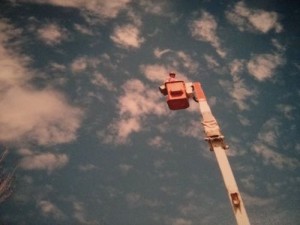 I’m something of a pathological truth-teller, which is a line I stole from Lauren Groff’s new novel, Fates and Furies, the book I’m reading right now. The interesting thing about that line being that the character described has a more ambiguous relationship to truth than the speaker supposes. Which is always the way. Truth is fudgy. I think I only have such a strong affinity for the principles of truth because lies are so easy, the slipperiest slope—and then anything one says ceases to have meaning, and then what is the point?
I’m something of a pathological truth-teller, which is a line I stole from Lauren Groff’s new novel, Fates and Furies, the book I’m reading right now. The interesting thing about that line being that the character described has a more ambiguous relationship to truth than the speaker supposes. Which is always the way. Truth is fudgy. I think I only have such a strong affinity for the principles of truth because lies are so easy, the slipperiest slope—and then anything one says ceases to have meaning, and then what is the point?
It’s true though I’m often willing to forsake a bit of truth for the sake of a story. Which is why I wouldn’t be surprised at all to have made up the whole thing, the story of my friend Britt and I driving down a country road outside Peterborough during the summer of 2000. How there was a hydro truck pulled over by the same of the road, a crew working on a Sunday. (At the time, I don’t think I knew the song, “Wichita Lineman”, or else I would have been humming it.) We pulled up alongside, and somehow had the nerve to roll down our window.
“Could we have a ride in your bucket?” I asked.
And I’ll never forget the so-perfect response: “I can’t think of a reason why not,” the crewman said.
And he even meant it.
And so the crewmen paused their work for a moment and gave us each a chance to put on a hardhat and take a trip up in the bucket. Violating more health and safety policies than I can dream up, though I was 21 at the time and didn’t think in those terms. Still though, we knew it was amazing. We took pictures. That vivid blue sky, the wispy clouds.
If not for the photo, I really wouldn’t believe it. I’m not even sure I really remember it happened. That ride in the bucket seems more like a figment. A figment of reality, if there exists such a thing. “I can’t think of a reason why not,” that crewman said—has there ever been anybody else with so limited an imagination? And yet. Perhaps he was dealing with a surfeit, head in the clouds literally and otherwise.
And I mention this story here now because for the past few weeks, I’ve been stuck in the past, working on a story whose roots are autobiographical. All this spurred on by my husband’s application for Canadian citizenship, and how I was rooting around in boxes to unearth his university degree (which confirms his competency in English). I found my diary from my final year of university, a diary that begins on September 14 2001 and is written by a girl who was dazzled and devastated by the world at once. And I found the scrapbooks I so painstakingly compiled back in those years, determined to preserve every single moment. Not yet understanding then that there are so many moments, if we’re lucky, more moments than ever could fit in a storage locker full of scrapbooks. Not understanding then either that I mightn’t want to hold onto everything forever. That there would be so much I’d want to let go.
When we moved back to Canada ten years ago, I got rid of a whole bunch of stuff. Diaries, scrapbooks, yearbooks, tossed out in black plastic bin bags. There wasn’t room for all of it. Who wants to go through life with so much baggage? But I didn’t get rid of all of it. Enough to fill a couple of boxes, from the years that were most monumental. So there would be gaps, big gaps, but I don’t regret it now. I don’t regret the bits I kept either, which become more and more precious all the time. But so too are the gaps, which allow me tremendous freedom both as a writer and as a human being. To let stuff go, to be allowed to forget, but also to fill those gaps with other things—creation.
To go for a ride in the bucket, I mean, whether it happened or not.
- If Creative Nonfiction is your thing, check out Amanda Leduc’s series this month on The Puritan’s Blog. She writes about Lucy Grealy and chutzpah, see Julia Zarankin on birdwatching and the pursuit of the strange, and Liz Harmer on writing without rules.
September 14, 2015
Martin John, by Anakana Schofield
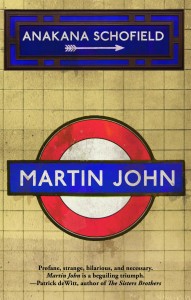 “That’s aggressive, but you see this hasn’t been an easy book for any of us.”
“That’s aggressive, but you see this hasn’t been an easy book for any of us.”
Anakana Schofield’s Martin John, a novel about a sexual deviant and the follow-up to her award-winning Malarky, is primarily a book about language. It’s about sexual violence is able to happen because of words and ideas that are never articulated or defined, and how these ellipses in our understanding go on to create further damage and harm. “It was a time when people didn’t ask as many questions. That’s the time it was.”
And so in order to fill in the blank, to ask the questions, to define the it, Schofield has to reinvent the shape of a novel. Eschewing chronology, point-of-view, objectivity, artifice itself for something that more resembles a case study, a long-form incident report. Just the latest for Martin John, the reader supposes, who has been in and out of the care of psychologists, social workers and other medical professionals for much of his life. Though he makes a point to stay out of their way—meddlers—and to keep to his routines, essential. He’s holding down a job as a security guard, lives in a nondescript shabby house in London (albeit one cluttered with the detritus of his media habits), visits his Aunt Noanie on Wednesdays, under specific instruction of his mother back in Ireland. (D’ya hear me, Martin John?) But it’s clear that, no matter his circuits and refrains, this centre (a precarious arrangement orchestrated by the mother) simply cannot hold.
The Mother. Martin John’s mother is a spiritual sister to Our Woman from Malarky, who does make an appearance in this latest book, encountering Martin John in a psychiatric ward. (You might remember him as “Beirut”.) Both women are undone by motherhood, wielding teapots as weapons, this action underlining their powerlessness. And yet. Are they really powerless? Are they bad mothers? Do they do what they do out of love? Or what? Do we blame the mother? Does it even matter? Does being a mother somehow put a woman beyond reproach?
Do we blame the mother? The collective address here is not rhetorical. I’m talking to you, and Schofield’s narrator is talking to all of us:
“She did not the idea she had a role in it.
You would not like the idea you had a role in it.
Did she have a role in it?
Have you had a role in it?
Do you have a role in this?”
Martin John forces the reader to be held accountable for some of the violence contained therein, for that time it was in which people didn’t ask as many questions is happening right now. “A thesaurus of vagueness for remembering,” Schofield writes. Think of a now-infamous CBC presenter, hmm? All this making for a discomforting read, made even more so, remarkably, by the reading not being so discomforting at all.
For a novel about a sexual deviant, Martin John is positively breezy. It’s humorous in places, fast-paced, its momentum spurred on by the arrows separating the text’s sections, part of the book’s overall transit motif. A motif that’s important to understanding the book as a whole, notions of underground and close proximity, of public, that these are people who live among us—they are us. And what are to do about that? The idea of transit and transit maps connecting to Martin John’s behaviour too, his loops and circuits. A sense of inevitability. The way that one thing leads to another: “Strange. Estranged. Estuary ranged.” It all comes back to words again, connections, missed or otherwise.
As Anakana Schofield is a friend of mine, I perhaps cannot be relied for a wholly objective review of her work, those it pleases me immensely that I don’t have to be. Read a rave review (one of many) from the Globe and Mail this weekend, and celebrate Martin John’s deserved appearance on the Scotiabank Giller longlist.
September 10, 2015
Daisy Saves the Day, by Shirley Hughes
 British institutions collide in today’s Picture Book Friday pick, in which the great Shirley Hughes pens a picture book right out of Downton Abbey with bunting as a major plot point. I know.
British institutions collide in today’s Picture Book Friday pick, in which the great Shirley Hughes pens a picture book right out of Downton Abbey with bunting as a major plot point. I know.
The book is Daisy Saves the Day, about a young girl who has to leave school and take a job as a scullery maid in a grand house in London in order to earn money to help care for her younger siblings. Which was not such a remarkable path for a young girl of her class, but Daisy herself is quite remarkable, bright and clever, hardworking at school. She’s also not particularly good at, well, scullery-ing. Her employers’ modern and unconventional niece, who is visiting from America, wrangles her permission to browse the house’s extensive library however, which makes Daisy’s life a little less lonely.
The story takes place during the summer of 1901 when George V was crowned, and the streets of London were decked in Union Jacks, flags and streamers. (The text doesn’t explicitly say “bunting,” but them there triangles are not just any flags, are they….) Except that Daisy’s house remains plain and unadorned—her employers, The Misses Simms, considered the decorations vulgar. And Daisy, naturally, is disappointed to not be part of the fun.
Ever-enterprising, however, she devises a cheeky way to join in, fashioning a string of bunting out of dishcloths and pillowcases and BRIGHT RED BLOOMERS, no less.
Which, of course, gets her in hot water with the Misses Simms, and poor Daisy is landed in disgrace. She’s given so many extra chores that by the end of the day, she’s too tired to even read. But never fear, there will BE redemption. When one night Cook hangs dishcloths a bit too close to the fire and then nods off, it is Daisy who smells the smoke and rushes to the kitchen to help put the fire out, saving the day, as per the title.
The Misses Simms are so impressed with their young charge that they bestow on her the ultimate gift: they free her from service and offer to pay for her schooling. Because “…it seems to me that you are better at reading than at polishing and scrubbing.” Indeed. And then a happy ending, because Daisy gets to go home to her mother and her brothers. A cheerful end to a cheerful tale, gorgeously rendered in classic Shirley Hughes style, and with endpapers decorated with vintage advertisements for household cleaning products.
We loved this one!
Check out the Daisy Saves the Day website, with more information about the book and activities too.
September 10, 2015
It begins.
I got pregnant at nearly the exact same time as Harriet started playschool three years ago, when she was three years old. And I so vividly remember those precious mornings, the time, rushing home to rescue my tea from under the cozy and sit down to get some work done, not wasting a single moment. To be alone. Although the time did not seem so luxurious: I was in my first trimester and would pass out every night not long after Harriet did. If I hadn’t had those mornings, I would have had no time to get any work done. After Christmas when my energy levels had returned, I got a job writing a book about Arctic exploration, the gold rush, mountain climbing, and parkas, and by then my days of freedom were numbered anyway. So I spent that winter reading Pierre Berton on the Klondike and listening to Iris by the Split Enz over and over again, dreaming of my baby as she kicked away inside me—so you see, I was really not so alone at all.
It seemed like the smallest window, that year. I knew that with our new baby, we’d soon be thrown back into newbornland and babyhood, and we’d have to find our way out again. That it would be a long before I once more found myself at home alone at 9:30 in the morning, the teapot still warm. I edited an entire book as the baby slept on my chest, for heaven’s sake. And now, here I am. And dare I say it: it all went by so fast?
This morning I dropped Harriet off at Grade One, which she is enjoying immensely so far, and then Iris and I trekked down the street for her to begin her first day of playschool. The playschool she has known since she was a fetus: she spent her first year in her carrier as I did co-op shifts three times a month. By the end of the year, she was scooting around the room like a champion. It has always been familiar to her. We love the teachers. Last year when Harriet was no longer a student there, we still visited our playschool friends often, and we’d play with them at the park.
Drop-off was not without its drama. Iris was not happy about my departure, and while I wanted to get out of there and trusted she was in very good hands, I’m a bit worried about the teachers who’ll have to deal with her. Though I assure myself that perhaps like all parents, I’m imagining that my child is more unique and particular than she actually is. I’m crossing my fingers that they’ve seen it all before. And that she’ll have a wonderful morning.
And now here I am, right back where I’ve been before except that this is the way forward instead of just a blip. It’s even time to put the kettle on. It’s time to get some work done. To figure out this new routine, just what to do with all this space and this quiet.
See also: “When I got home again, I didn’t know what to do because there was so much that I wanted to do.”
September 9, 2015
Light Years, by Caroline Woodward
 Caroline Woodward is author of Singing Away the Dark, which is one of my favourite picture books of all time, a book in rhyming couplets with just a few hundred words that has actually given me great strength more than once at times when I needed it. It’s based on Woodward’s own rural childhood: “When I was six, and went to school, I walked a long, long way…” and recounts her journey in the dark through the woods to meet her school bus each day, facing down fears, shadows, and actual cows. And so her latest book, Light Years: Memoirs of a Modern Lighthouse Keeper, is not such a departure, another book about lighting the darkness, being audacious and daring, and about the deep and complex relationship a person can have with place.
Caroline Woodward is author of Singing Away the Dark, which is one of my favourite picture books of all time, a book in rhyming couplets with just a few hundred words that has actually given me great strength more than once at times when I needed it. It’s based on Woodward’s own rural childhood: “When I was six, and went to school, I walked a long, long way…” and recounts her journey in the dark through the woods to meet her school bus each day, facing down fears, shadows, and actual cows. And so her latest book, Light Years: Memoirs of a Modern Lighthouse Keeper, is not such a departure, another book about lighting the darkness, being audacious and daring, and about the deep and complex relationship a person can have with place.
From the back of the book: The very TRUE STORY of a WRITER who always chose ADVENTURE over security, LOVE over logic, and who (naturally) quit her best job ever to go off with her equally peripatetic husband to LIVE at a LIGHTHOUSE and WRITE all the stories she always wanted to write, including THIS ONE.
(I don’t usually include descriptions from the back of books, but I particularly love that one.)
Woodward’s memoir is as meandering as her life has been, and I mean that in the best way. I mean that instead of a straightforward narrative about days in and days out as a lighthouse keeper (days that begin at 4am for the first weather report), we’re permitted to a broader story about how she and her husband came to live “on the lights” (after previous careers as booksellers and Woodward’s time spent working as a publishing sales rep up and down Vancouver Island, and throughout all of this wanting to make space for writing in her life), her own childhood spent homesteading in Northern British Columbia, in-depth lessons on meteorological geekery, about baking in a lighthouse kitchen (with enough cookies to feed the Coast Guard at Christmas), about how not to be decapitated by a helicopter propeller-blade, and gardening in challenging climates, and how lighthouse keepers cast their votes (Elections Canada officials arrive by helicopter!). It’s also a fervent defence of manned lighthouses, which are always under threat of budget cuts, and the role the lighthouse keepers play in keeping boaters safe, rescuing lost hikers, monitoring weather conditions and documenting the composition of sea-water for scientific data.
Somewhat incongruously, this book about remote and lonely places is not about loneliness at all, but about one finally finding her place in the world after decades of searching. And it’s a love story, Woodward and her husband’s devotion to each other a constant throughout and one of the chief delights of the memoir. They both work as relief lighthouse keepers, this involving separation for weeks or months at a time, and they find ways to stay connected through these periods. When they’re home, however, they live together at the Lennard Island Lightstation on the West coast of Vancouver Island, and Woodward knows she is privileged to live this remarkable life.
At the end of the book, she writes, “Remember this, memorize the pitch and rise and fall of these sounds because you will not hear them once you are far away from this life, this wonderful, amazing adventure.” And the reader is lucky to be journeying alongside for awhile.
September 7, 2015
Cake and Back to School
Back to school tomorrow! Which means that we spent much of today at the CNE, which was excellent, and the prize-winning celery was as wonderful as I’d hoped for. (It’s basically the reason I go.) And we are so very hot, the weekend spent dripping with sweat and entertaining people in high humidity. Last night our best friends from kindergarten came for dinner, one of our now-regular togethers that involves too much wine and so much cake. Meeting these families was one of the best parts of last year, and I will miss them as our children move onto new classes and schools and our daily lives are no longer as connected. Although friendships can and do endure, as evidenced by tonight when my friends and former roommates Kate and Erin (and Kate’s husband Paul) came over last minute for pizza. The last-minute thing remarkable because Kate and Paul live in Vancouver, and we’ve not seen them in three years. But here they were tonight, with a cake even. And what a cake? If my book ends up looking half as excellent as this one, I will be satisfied. (Apparently the image was inspired by my Mitzi Bytes pinterest board, because there is indeed such a thing.) I have the most terrific friends. Anyway, the convenient thing about all of this is that Harriet’s first day of school lunch is leftover pizza and cake, so her year is off to an excellent start. Wish us luck tomorrow as all the madness and fun begins!
September 5, 2015
Come Away With Me, by Karma Brown
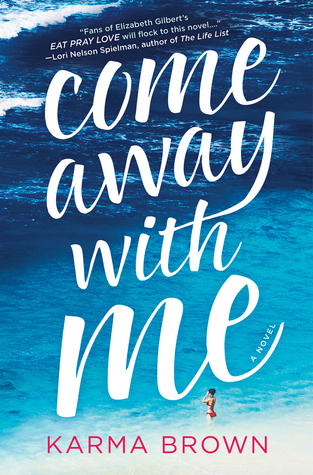 I am intrigued by questions of how people survive the seemingly unsurvivable, which was the reason I picked up Come Away With Me, Canadian writer Karma Brown’s debut novel. It’s the story of Tegan Lawson who had everything she’d ever wanted—an amazing husband and a baby on the way—when the dream is shattered by a horrific accident. Five months after the tragedy, her husband implores her to pick up the pieces of their life (and perhaps begin to forgive him for the accident, as he was driving the night it happened) by embarking on the trip of a lifetime to Thailand, Italy and Hawaii. Reluctantly, she goes, though she is not sure she’s ready (and neither are their families). And the trip itself does not prove to be the salve it might have been in a lesser novel, all of their troubles simply melting away—Tegan’s not taking her anti-depressants, she’s regularly still overcome with despair, her anger toward her husband seems impossible to let go of. And here we begin to see that this dream getaway is not the end of Tegan’s story but it’s the beginning of new one that’s vastly different than the life she’d planned on and dreamed of.
I am intrigued by questions of how people survive the seemingly unsurvivable, which was the reason I picked up Come Away With Me, Canadian writer Karma Brown’s debut novel. It’s the story of Tegan Lawson who had everything she’d ever wanted—an amazing husband and a baby on the way—when the dream is shattered by a horrific accident. Five months after the tragedy, her husband implores her to pick up the pieces of their life (and perhaps begin to forgive him for the accident, as he was driving the night it happened) by embarking on the trip of a lifetime to Thailand, Italy and Hawaii. Reluctantly, she goes, though she is not sure she’s ready (and neither are their families). And the trip itself does not prove to be the salve it might have been in a lesser novel, all of their troubles simply melting away—Tegan’s not taking her anti-depressants, she’s regularly still overcome with despair, her anger toward her husband seems impossible to let go of. And here we begin to see that this dream getaway is not the end of Tegan’s story but it’s the beginning of new one that’s vastly different than the life she’d planned on and dreamed of.
I read this book with pleasure, appreciating its light touch in particularly after spending a week carrying around the Joan Didion bio. Though it’s essential to note that my full appreciation of its remarkable structure and craft was not clear until close to the end. Until that point, I’d been putting some hollow characterization and a bit of narrative strangeness down to the fact that this was a(n otherwise capable) first novel. “I like this book, but…” I was saying to my husband yesterday. Not supposing that all this was part of an authorial sleight of hand that was so absolutely mind-blowing. By which I mean that the discerning reader should be encouraged to bear with this book: rewards will be forthcoming. You’ll see what I mean.
By rights, this book should be terrifically sad, and while I was discovered in a puddle of tears this morning by my concerned family (who wondered why I was taking even longer than usual to get out of bed), Come Away With Me leaves its reader buoyed and full of hope. In the best ways, it reminded me of Sonali Deraniyagala’s Wave and also Laurie Colwin’s Shine On Bright and Dangerous Object (which I reread this summer and absolutely adored). It’s an impressive and memorable novel celebrating life and love and the possibilities of survival.
September 4, 2015
Sometimes I Feel Like a Fox, by Danielle Daniel
Today’s Picture Book Friday pick is Sometimes I Feel Like A Fox, by Danielle Daniel, a gorgeous book that my kids love whose meaning is made all the more poignant by its dedication: ““to the thousands of Metis and Aboriginal children who grew up never knowing their totem animal.” Our world is a very complicated place, but I continue to maintain that one very simple thing we can do toward reconciliation with our Metis and First Nations peoples is ensure that our children know their stories, and not just the stereotypes they encounter in so much of classic children’s lit or the “dead Indian” tropes that Thomas King presents in The Inconvenient Indian. And one thing we can do toward healing and ameliorating the status of Indigenous women in Canada is to buy their books, have their stories told. (See the list: Books by Canadian First Nations and Inuit Women.) And so to those ends, picking up a book like this is an important political act.
It’s also a most rewarding literary one.










